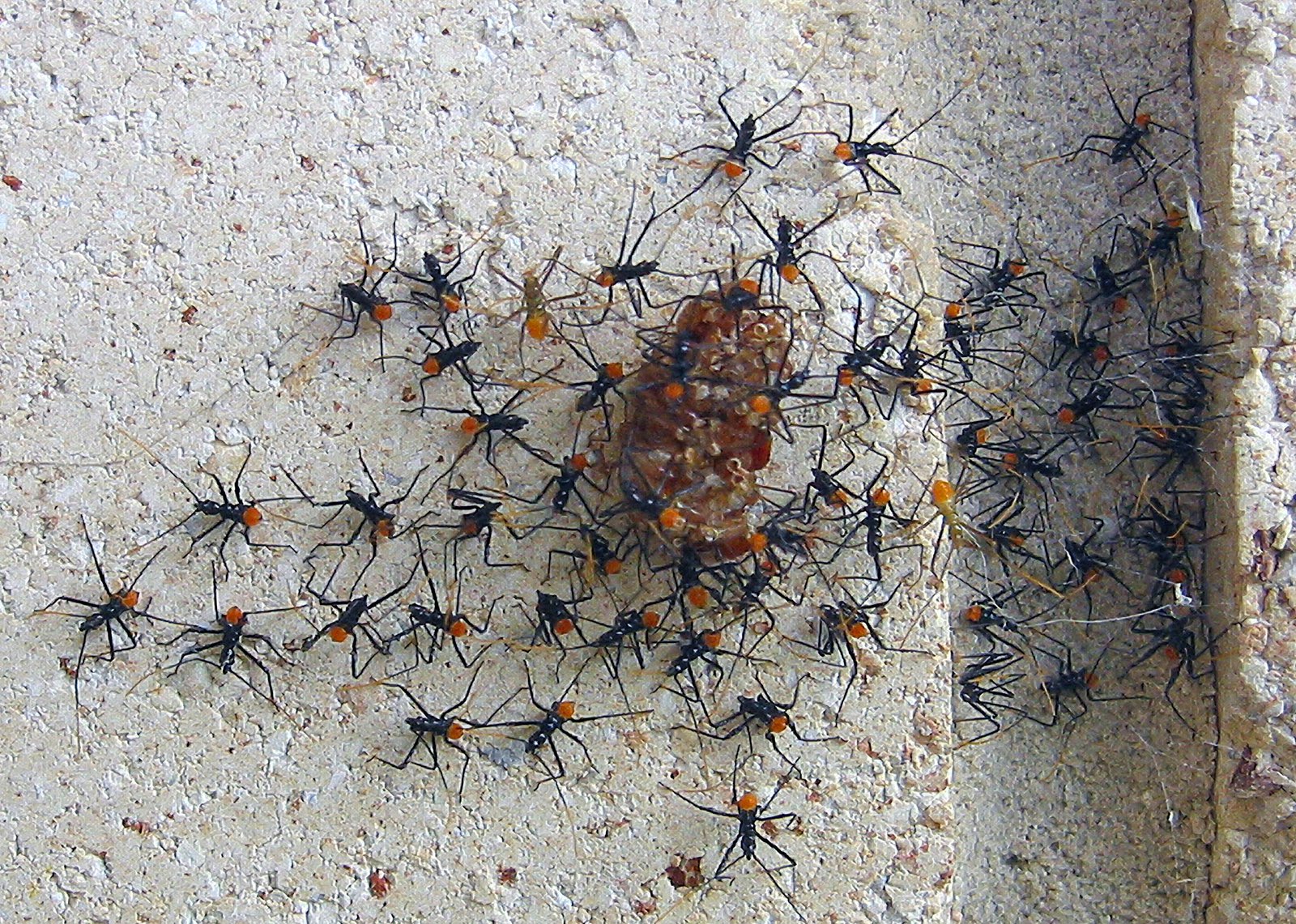Common and Unusual Identifications - Insects
On this page...
A collection of images of objects and animals which people have sent to Search & Discover to share or be identified.
Assassin bug nymphs

© Nick Frame
These Assasin bug nymphs (young) are the first instar and are mimicking ants (leptomyrmex).
The name assassin bug is due to the way this insect feeds on its prey. Often approaching from behind, the assassin bug will stab the prey and inject an enzyme which will disolve the prey's inner organs. The assassin bug can then feed on the fluid.
Assassin bugs are not known to be aggressive, but may bite in self-defence. The bite is reported to be extremely painful (as the same salivary secretion is injected through the skin as used to kill their prey). Intense burning sensations followed by a lump lasting for several days may be present at the site of the bite.
Wasp, not 'ant'

© Australian Museum
Blue Ants are bright metallic blue or green, and can sometimes be mistaken for a large ant. However they are a solitary wasp species, this one is actually as wingless ground dwelling female flower wasp, the males are fully winged and can often be found on flowers.
Colourful Blowfly

© Australian Museum
This insect is often mistaken for a bee. It is not a bee at all but a colourful fly - and a very interesting one too! Flies have only two wings and usually insignificant antennae, while bees have 4 wings and prominent antennae.
This insect is called a Snail Blowfly Amenia imperialis. This species, as a maggot, is a predatory parasite of snails - including the common Garden Snail Cornu aspersum which they are very good at controlling. The adults feed on nectar from flowers, rather like a bee, which might contribute to people confusing them with bees.
There is some variation in the colour depending on the individuals genetic background, and/or if it has recently emerged from the pupal stage. They often emerge as blue tinged and become green as they harden and dry.
Mantis fly

© Stephen Hocking
This is a mantis fly (family Mantispidae) - they are a diverse and relatively common family of lacewings that have adults with the typical “raptorial” forelegs of mantids, but with the rest more like a typical lacewing. The larvae of some species are parasitic on spider egg sacs. They are often strongly attracted to light at night, but are rarely seen during the day.
Common Brown Butterfly

© Australian Museum
The Common Brown Butterfly is active in spring and summer when there is sunshine and plenty of flowers to feed on.This butterfly is found in south-eastern Queensland, New South Wales, Victoria, Western Australia, and Tasmania.
Male Cruiser Butterfly

© Janette Murdoch
The female of this butterfly species are seen much less frequently and have quite different markings. The upper side of the female has dark tips to the forewings and broad pale band across the centre of each forewing which continues onto the leading edge of the hindwing. The female also has two small eyespots on each hindwing.
The eggs are laid on the food plant such as native passion vines. The adults feed at lantana and other flowers. They have a strong gliding flight. Males appear to establish territories by perching on a leaf in full sunlight. Adults are on the wing throughout the year and appear to be most abundant after the wet season.
This species ranges from Maluku through mainland New Guinea and north-eastern Australia.
Heteroptera nymphs

© Australian Museum
These nymphs are members of the stink bug or shield bug family and are referred to as true bugs. Most bugs are herbivores (plant feeders) piercing and sucking nutrients from plants. Many true bugs are experts at camouflage. They may behave in a particular way or they may use colouration, patterns, and special body forms to help them blend in with their surroundings. For example some look like sticks, leaves, dirt or bark.

